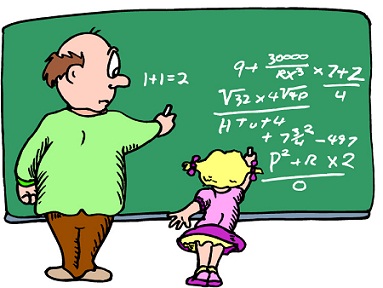Personalized learning is somewhat that educators of all kinds are motivated for. A teacher who can make learning relevant, real also appropriate for each student in their class is one who can see amazing successes also empowered students. But with too many students also too little time making learning as personalized as possible is not always easy.

Handy info-graphic use in learning is to drive a great example of personalized learning. When you learn to drive, you are basically having a personalized, one on one instruction with real time observation also feedback. Can you imagine if students could learn math that way?
Why Learn Math Like You Learn To Drive?
Info graphic explores ‘traditional teaching' as compared with teaching ‘focused on point of learning'
Teaching focused on point of learning:-
1) Demonstrates skill
2) Watches student perform skill
3) Observes also gives critical feedback
4) Ensures testing is practically applied
Traditional teaching:-
1. Demonstrates skill
2. Students practice skill on their own, with little feedback
3. Testing is less about demonstrating that student has acquired practical skill
4. Many ‘life also death' professions are taught in ‘focused on point of learning' method, with one-on-one training also feedback (like surgeons also pilots)
5. Kids who excel in math in elementary school are twice as likely to find out employment as adults, achieve higher levels of education also earn more money in their lifetimes
6. America's GDP is estimated to increase by $77 trillion if students in US could increase their math scores to be equal to those of students in Canada
7. Only 41% of 4th graders scored proficient in mathematics in 2013
8. Only 24% of 8th graders scored proficient in mathematics in 2013
9. US students consistently perform poorly in math despite increased spending per student.
Does this approach of teaching math fail even smartest kids?
Here is why math education your children need is most likely not what their school is teaching. As sure as one plus one equals two, it happens year after year. Kids who have been bringing home as in chemistry also acing AP Calculus arrive at college with visions of STEM careers dancing in their heads. Then they hit an invisible, but very painful, wall.
According to research from University of California, Los Angeles, as many as 60 percent of all college students who intend to study a STEM (science, technology, engineering, also math) subject end up transferring out. In an era when politicians also educators are beside themselves with worry over American students' lagging math also science scores compared to whiz kids of Shanghai also Japan, this attrition trend so troubles experts it has spawned an entire field of research on "STEM drop-out," citing reasons from gender also race to GPAs also peer relationships.
One theory for STEM exodus is that American students aren't getting a good foundation in math - a necessary skill in many scientific also technical curricula. After all, about a third of American high school seniors don't score proficient in math. But here's kicker: STEM attrition rates are even higher at most selective colleges like Ivy Leagues places where kids need killer AP scores also grades just to get in.
So, why do even most accomplished students burn out of STEM programs when they hit college? From alluring grade inflation in arts also humanities, to what one engineering professor characterized as boring, largely theoretical "math-science death march" of first-year requirements.
Conclusion:
We have not found the right balance between traditional math and discovery math. The solution above includes one on one teaching which a great idea is if cost was not an issue. Cost is an issue. Find a practical (cost effective) solution that combines teaching traditional foundational skills and allows for creativity but neither should be at the expense of the other. Traditional math skills have been taught in the drill and kill format for years. With technology we can now provide the same principles in a more fun and engaging format and make learning the basics into a drill and thrill format.